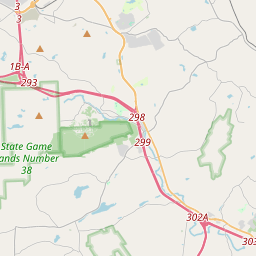This National Park Is Our Home
Historical marker location:






Delaware Water Gap National Recreation Area. Smithfield Beach
1872: Yellowstone National Park is established as the first national park in the United States and widely recognized as the first national park in the world.
1890: Yosemite National Park is established in California, protecting its iconic landscapes and natural wonders.
1916: The National Park Service (NPS) is created as a federal agency responsible for managing and preserving national parks. Stephen Mather becomes the first director of the NPS.
1919: Grand Canyon National Park is established in Arizona, safeguarding its immense and awe-inspiring canyon.
1926: Great Smoky Mountains National Park is established, becoming the most visited national park in the United States.
1933: President Franklin D. Roosevelt establishes the Civilian Conservation Corps (CCC) as part of his New Deal program. The CCC plays a crucial role in the development and conservation of national parks, employing thousands of young men in projects such as trail construction, reforestation, and infrastructure improvements.
1964: The Wilderness Act is passed, protecting designated wilderness areas within national parks and other public lands, ensuring their preservation in their natural state.
1970: The National Environmental Policy Act (NEPA) is signed into law, mandating environmental impact assessments for federal projects, including those within national parks.
1980: The Alaska National Interest Lands Conservation Act is passed, expanding the national park system and adding significant areas of land in Alaska, including the establishment of Gates of the Arctic National Park and Preserve.
2009: President Barack Obama signs the Omnibus Public Land Management Act into law, designating several new national parks and expanding existing ones, such as Joshua Tree National Park and Zion National Park.
Present: The U.S. National Park system has grown to include over 60 designated national parks, as well as national monuments, preserves, seashores, and historic sites. These protected areas attract millions of visitors each year and serve as vital conservation areas for biodiversity, natural wonders, cultural heritage, and outdoor recreation.
The establishment and continued expansion of the U.S. National Parks reflect a commitment to preserving and sharing the country's unique natural and cultural treasures for future generations.
Pennsylvania is home to the longest stone arch bridge in the world, the Rockville Bridge, which spans the Susquehanna River near Harrisburg.
The county was officially formed in 1814, carved out of parts of Wayne and Northampton counties. It was named after Zebulon Pike, an American explorer who died during the War of 1812. Pike County played a significant role in the development of the Delaware and Hudson Canal, which was constructed in the mid-19th century to transport coal from Pennsylvania to markets in New York City. The canal brought economic growth and prosperity to the region, attracting new industries and settlers.
During the American Civil War, Pike County faced challenges and divisions like many other regions in the country. While the county itself was not a major battleground, its residents were deeply affected by the conflict, with many men enlisting in the Union Army. After the war, Pike County experienced a period of rebuilding and recovery, with renewed growth in agriculture, logging, and tourism.
In the 20th century, Pike County continued to evolve and adapt to changing times. Today, it is known for its natural beauty, including the Delaware Water Gap National Recreation Area, which attracts visitors from near and far for outdoor activities such as hiking, boating, and fishing. Pike County also has a vibrant arts community, with galleries, music festivals, and theaters showcasing the creativity of its residents. With a combination of historical significance and a focus on natural resources, Pike County remains a unique and interesting part of Pennsylvania's history.
Pike County Timeline
This timeline provides a glimpse into the major events and milestones that have shaped the history of Pike County, Pennsylvania.
- 1814: Pike County, Pennsylvania was established on March 26, 1814, named after Zebulon Pike, an explorer.
- 1822: The settlement of Milford became the county seat of Pike County.
- 1851: The first railroad, the Delaware, Lackawanna and Western Railroad, reached Pike County.
- 1899: The Zane Grey Museum was built in Lackawaxen to honor the famous author.
- 1944: The completion of the Dingmans Ferry Bridge provided a new river crossing in the county.
- 1963: The Delaware Water Gap National Recreation Area was established, protecting a portion of Pike County's natural beauty.
- 1978: The Columns Museum opened in Milford, showcasing local history and artifacts.
- 2004: The Woodloch Resort, a popular destination in Pike County, celebrated its 50th anniversary.
- 2012: Pike County became known nationally as the location of the tragic Sandy Hook Elementary School shooting.